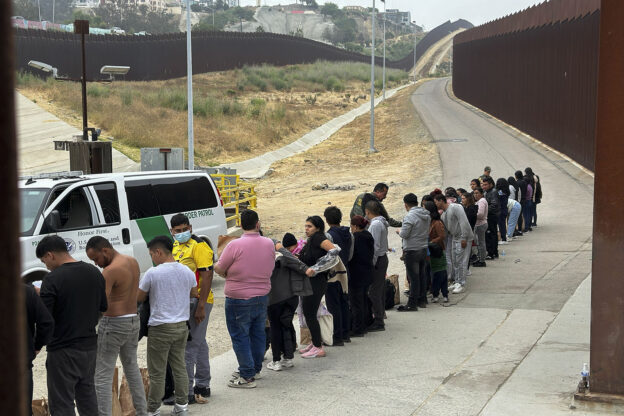
(RNS) — Donald Trump promised robust actions on immigration enforcement, and in his first few weeks in office he has certainly delivered. He has stripped Venezuelan refugees of their temporary protected status, removed enforcement protections for “sensitive locations,” including houses of worship, and former director of Immigration and Customs Enforcement Tom Homan has launched a promised roundup of unauthorized migrants with criminal records (though less than half of those arrested so far seem to match this description).
This shift is less landscape-altering than the Trump administration might think it is, however, and sanctuary remains poised to play a prominent role in this administration.
The sanctuary movement got its start in the 1980s, when faith communities and other organizations resisted Reagan’s policy of denying asylum to those fleeing anti-communist regimes in Central America backed by the United States and to ease suffering at the U.S.-Mexico border. Houses of worship housed refugees from Guatemala, El Salvador and Nicaragua, giving them a platform to speak and to name the source of their home countries’ misery: U.S. imperialism.
The new sanctuary movement gained traction in 2014, as thousands of Central Americans fleeing gang violence and encouraged by both a federal policy that exempted unaccompanied minors from deportation and false promises from smugglers of “permisos” flooded the border.
While much has been made of the removal of the “sensitive locations” policy that restrained Immigration and Customs Enforcement agents from entering houses of worship, the original sanctuary movement had no such assurances. They announced that their houses of faith were sanctuaries, housed asylum seekers and called on INS, ICE’s predecessor, not to “profane the sanctuary of God” without any special protection.
At the time, leading figures such as John Fife, Jim Corbett and Luis Olivares took risk upon themselves and their congregations to follow their conscience. They were willing to pay the price. In the event, Fife and Corbett were among the 16 indicted in 1985 for their sanctuary activism, but the trial embarrassed the administration, with the defendants claiming the moral high ground (“If I am guilty of anything, I am guilty of the Gospel,” declared one). Most got negligible sentences, and the trials were widely viewed as a public relations disaster. Since then, the federal government has been loath to make the same mistake.
That’s not the only reason the government has avoided prosecuting sanctuary activists. Many of the legal questions surrounding sanctuary are bound up with the free exercise clause and separation of church and state issues. Until a case involving sanctuary makes its way to the Supreme Court, we are unlikely to have a clear understanding of just how much protection the First Amendment offers sanctuary activists.
But questions about sanctuary’s legality actually miss the point. Simply put, Americans regard houses of worship as sacred and won’t see them sullied by immigration enforcement. They are special zones set apart from our daily life. Legally, houses of worship are no different than your community’s local favorite diner, but spiritually and socially, they are of an entirely different category altogether.
That is why the removal of the “sensitive locations” protection does not materially change the calculus of the practice of sanctuary. It may have a chilling effect on faith communities’ willingness to take on risk during this time, and many churches have indeed backed away from this activism because of the ban’s rescission. The 1980s proved that, memo or no memo, people of faith who feel compelled to practice sanctuary will not sit idly by and become complicit in cruelty.
Sanctuary, in short, is going nowhere. There will be communities of faith, like the one I pastor, that will double down on the practice of sanctuary because they feel that it is both the right thing to do and that God is compelling them to act in this moment. Neither human dignity nor the sanctity of sacred space can be altered by memos or edicts from political leaders; they are immutable, spiritual facts.
(The Rev. Michael Woolf is senior minister of Lake Street Church of Evanston, Illinois, and co-associate regional minister for white and multicultural churches at the American Baptist Churches of Metro Chicago. He is the author of “Sanctuary and Subjectivity: Thinking Theologically About Whiteness and Sanctuary Movements.” The views expressed in this commentary do not necessarily reflect those of Religion News Service.)
